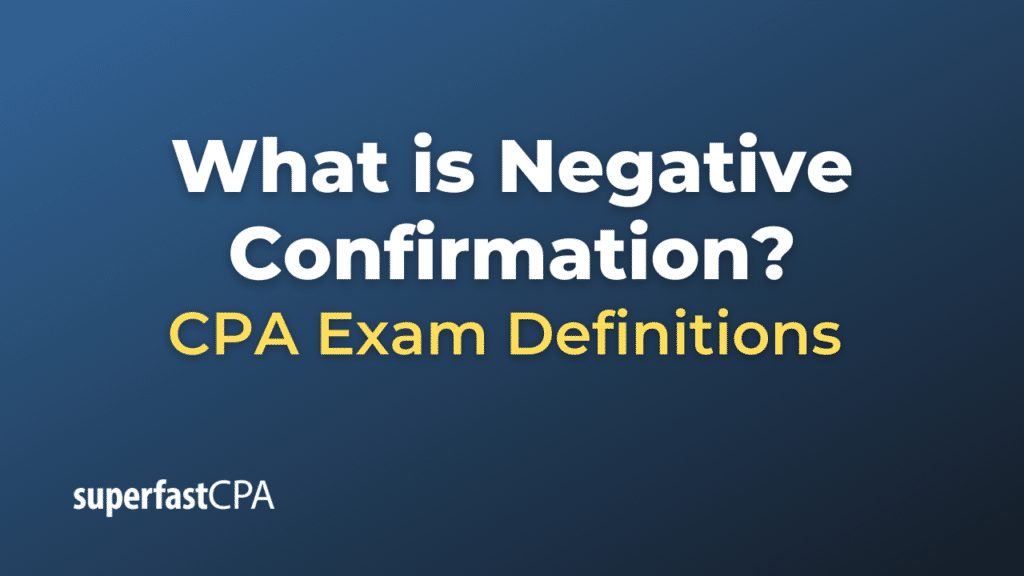Negative Confirmation
Negative confirmation is an audit procedure where an auditor sends a letter to a client’s customers asking them to respond only if they disagree with the balance shown on the statement. The purpose of a negative confirmation request is to verify the accuracy of the accounts receivable recorded on a client’s financial statements.
If no response is received from the customers, the auditor assumes the balances are correct. This assumption is based on the premise that customers would promptly notify the auditor if the information in the confirmation letter was not in accordance with their records.
Negative confirmations are less persuasive than positive confirmations because the lack of response does not necessarily mean the customer agrees with the balance. It could simply mean that the customer ignored or overlooked the request.
As such, auditors typically use negative confirmation requests when control risk is assessed as low, the population of items is large, and the auditor is satisfied that recipients of the requests are likely to give them consideration. However, if the risk of material misstatement is high, then positive confirmation would be preferred.
Example of Negative Confirmation
Let’s consider an example of an auditor named John who is auditing a manufacturing company named Best Manufacturing Inc. As part of his audit procedures, John needs to verify the accounts receivable balance at year-end.
Let’s say Best Manufacturing Inc.’s records show that a client, Quality Goods Co., owes them $20,000. John sends a letter to Quality Goods Co., stating: “According to our records, you owe Best Manufacturing Inc. $20,000. If you disagree with this information, please respond with the correct amount.”
This is a negative confirmation because John is assuming the balance is correct unless Quality Goods Co. responds to correct it.
Now, if Quality Goods Co. does not respond, John takes that as confirmation that the $20,000 balance is correct. However, if Quality Goods Co. does respond and say, “Actually, we only owe $15,000,” then John has to investigate the discrepancy.
Negative confirmations can be more efficient for John to use, especially when dealing with a large number of customers. However, they provide less robust evidence than positive confirmations because a lack of response can also be due to other reasons, such as the customer overlooking or disregarding the request.












